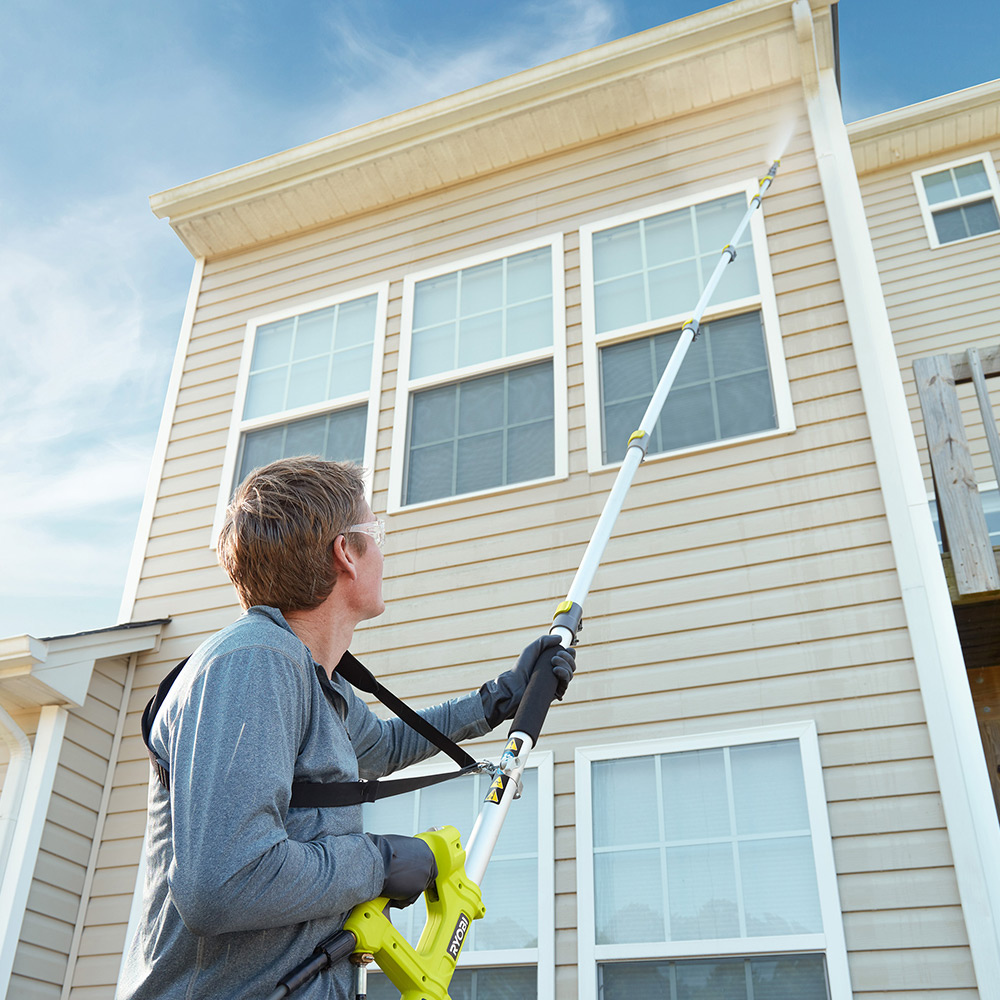Professional House Washing options for a spotless home exterior.
Professional House Washing options for a spotless home exterior.
Blog Article
Recognizing the Trick Distinctions In Between Pressure Washing and Home Washing
The distinction in between pressure washing and home washing is crucial for home owners looking to maintain their property's exterior. House Washing. While pressure washing uses high-pressure water jets to remove stubborn crud from durable surface areas, home washing uses a gentler method that includes eco-friendly cleaner to shield more delicate products. Recognizing the nuances between these techniques not only influences cleaning performance however also affects the long life of your surface areas. As we discover these differences, it becomes apparent that the ideal selection can considerably impact your home's appearance and durability. What elements should you consider when choosing between the two?
Interpretation of Pressure Washing
Pressure washing, frequently referred to as power washing, involves making use of high-pressure water spray to eliminate dust, grime, mold and mildew, mold, and other impurities from different surface areas. This strategy is especially efficient on hard surfaces such as concrete, brick, and rock, making it an optimal choice for cleansing driveways, patios, and walkways. The process typically uses customized equipment that produces water pressure varying from 1,500 to 3,000 psi or more, making sure efficient cleansing even in challenging problems.
Pressure washing is not restricted to exterior surface areas; it can additionally be used for numerous applications, including vehicles, outside furnishings, and devices. It is important to keep in mind that the strength of the water pressure can potentially harm fragile surfaces, such as timber or repainted coatings, if not handled correctly. Picking the ideal pressure setting and nozzle kind is essential for optimal results.
Along with surface area cleaning, pressure washing can additionally play a considerable duty in maintaining the longevity of structures by preventing the buildup of unsafe impurities that can cause damage. In general, pressure washing acts as a powerful device for enhancing cleanliness and preserving the stability of various surface areas.
Interpretation of Residence Washing
Home washing refers to the comprehensive cleansing of a home's exterior surfaces, making use of a mix of low-pressure water and specialized cleaning services. This approach is designed to get rid of dust, mold, mildew, algae, and various other contaminants that gather over time, maintaining the visual appeal and architectural integrity of the residential property.
Unlike pressure washing, which utilizes high-pressure streams of water, residence washing emphasizes using lower pressure to stop damage to delicate surfaces such as exterior siding, roof covering, and repainted surfaces. The cleaning options used are usually naturally degradable and developed to successfully take on certain issues, making sure a detailed clean without compromising the setting or the honesty of the materials being treated.
Residence washing is specifically helpful for maintaining the look of plastic, timber, stucco, and brick exteriors. Routine home washing not only enhances aesthetic appeal yet likewise contributes to the long life of a home's outside surface areas by mitigating the effects of hazardous bacteria and ecological pollutants. House owners are motivated to schedule home washing occasionally to guarantee their residential property remains in optimal condition, therefore securing their investment.
Key Strategies Made Use Of
In the realm of exterior cleansing, different techniques are employed to accomplish ideal outcomes during residence washing. The key technique involves soft washing, which uses low-pressure water incorporated with specialized cleaning solutions. This strategy efficiently gets rid of dirt, algae, and mold without my review here harmful delicate surfaces such as timber or painted house siding.
An additional key method is using a surface area cleaner attachment, which is particularly efficient for level surfaces like outdoor patios and driveways. This tool offers consistent cleansing by utilizing turning jets that cover a larger location, guaranteeing constant outcomes.
Chemical application is also crucial in house washing. Cleaners such as salt hypochlorite or eco-friendly cleaning agents are commonly used to damage down hard stains and natural development. House Washing. Correct dilution and application approaches are vital to minimize any possible damage to plants or landscaping
Ideal Surfaces for Each
Pressure washing, which uses high-pressure water jets, is best suited for hard, sturdy surface areas that can endure intense pressure. These surfaces often collect hard stains, such as oil, oil, and mold, which call for the effective cleaning activity supplied by pressure washing.
On the other hand, house washing typically utilizes a softer method, using low-pressure water combined with specialized cleaning agents. Home washing efficiently removes dust, pollen, and mold without running the risk of damages to the exterior finish.
Benefits and Drawbacks

On the other hand, residence washing utilizes a gentler strategy, commonly using a mix of low-pressure water and cleansing services. This technique is much safer for painted surfaces, siding, and roofs, aiding to protect their honesty. The main drawback of home washing is that it might not remove deeply embedded dust or stubborn stains as effectively as pressure washing, which can need even more time and several applications.

Verdict
In summary, pressure washing and home washing serve distinct objectives in exterior cleansing. Pressure washing employs high-pressure water streams, making it appropriate for resilient surface areas and efficient versus challenging spots. Alternatively, home washing utilizes a low-pressure method with naturally degradable services, ensuring the visit this site safety of delicate products. Recognizing these distinctions facilitates educated decisions pertaining to the ideal cleaning method based on surface type and condition, eventually promoting effective maintenance and longevity of external surface areas.
Report this page